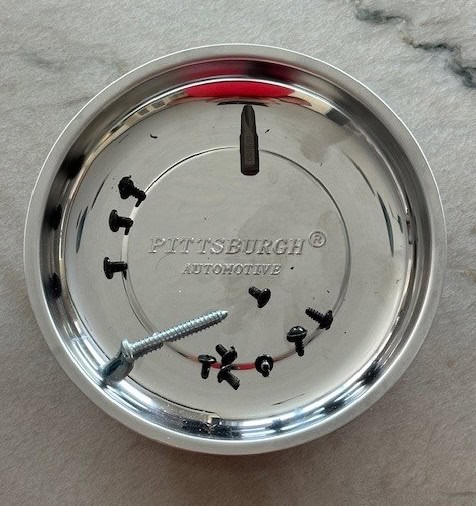A magnetic tray is a handy tool used to keep metal objects such as screws, nuts, bolts, and other small parts securely in place. These trays are typically lined with powerful magnets that attract and hold metal items, preventing them from getting lost or rolling away during DIY projects. Magnetic trays come in various sizes and shapes, making them versatile and essential for both professional mechanics and DIY enthusiasts.
History of the Magnetic Tray
The concept of using magnets to organize and secure small metal objects has been around for decades, but the modern magnetic tray as we know it today was popularized in the late 20th century. As the automotive and manufacturing industries grew, the need for efficient and reliable tools to manage small parts became evident. The magnetic tray was developed as a simple yet effective solution to prevent the loss of essential components in busy work environments. Over the years, the design has evolved to include stronger magnets, more durable materials, and ergonomic features that make it a staple in workshops around the world.
Types of Magnetic Trays
- Standard Magnetic Tray: A simple, flat tray with a magnetic base, used for holding small metal parts.
- Divided Magnetic Tray: Features built-in dividers to separate different parts, ideal for complex projects.
- Deep Magnetic Bowl: A deeper version of the standard tray, suitable for larger or heavier items.
- Flexible Magnetic Tray: Made from flexible materials, allowing it to be shaped or bent to fit into tight spaces.
- Magnetic Parts Mat: A flat, magnetic mat that can be placed on any surface to hold tools and parts in place.
Key Features of Magnetic Trays
- Strong Magnets: High-quality magnets that securely hold metal objects in place.
- Durable Construction: Typically made from stainless steel or heavy-duty plastic for longevity.
- Non-Marring Base: A rubberized or coated base that prevents scratches on delicate surfaces.
- Versatility: Available in various sizes and shapes to accommodate different tasks.
- Portability: Lightweight and easy to carry, often with a handle for added convenience.
Choosing the Right Magnetic Tray
When selecting a magnetic tray, consider the type of projects you’ll be working on and the environment in which you’ll be using it. For general-purpose tasks, a standard magnetic tray should suffice, but for more specialized work, you may need a divided or deep tray. If you frequently work in tight spaces, a flexible magnetic tray might be the best option. Additionally, consider the strength of the magnets and the durability of the materials to ensure the tray meets your needs.
Recommendations
Proper Use and Techniques
To make the most of your magnetic tray, place it on a stable surface near your work area, ensuring the base is clean and free of debris to maximize magnetic contact. Organize your parts by type or size in different sections of the tray, especially if using a divided tray. Avoid overloading the tray, as too many items can reduce the magnetic grip. Keep the tray within arm’s reach to minimize the risk of knocking it over during work.
Maintenance and Care
Maintaining your magnetic tray is straightforward. Regularly clean the tray with a soft cloth to remove any metal shavings, dirt, or grease that may accumulate. For stubborn grime, use a mild detergent and water, but avoid submerging the tray if it contains non-waterproof materials. Inspect the magnets periodically to ensure they remain strong and free from corrosion. Proper storage, such as keeping the tray in a dry environment, will prolong its lifespan.
Safety Tips
While magnetic trays are generally safe, there are a few precautions to keep in mind. Keep the tray away from sensitive electronic devices, as the magnets can interfere with their operation. Be cautious when handling sharp metal objects, as they may snap onto the tray unexpectedly. Always ensure the tray is stable and secure before placing heavy or sharp items on it. Additionally, avoid placing the tray near flammable materials, as sparks could be generated if the metal parts collide with the tray’s surface.
Conclusion
Magnetic trays are an indispensable tool for organizing and managing small metal parts during DIY projects. By choosing the right type of tray, using it properly, and maintaining it with care, you can enhance your efficiency and keep your workspace tidy. Whether you’re a seasoned professional or a DIY enthusiast, a magnetic tray is a valuable addition to your tool collection, helping you work smarter and more safely.


